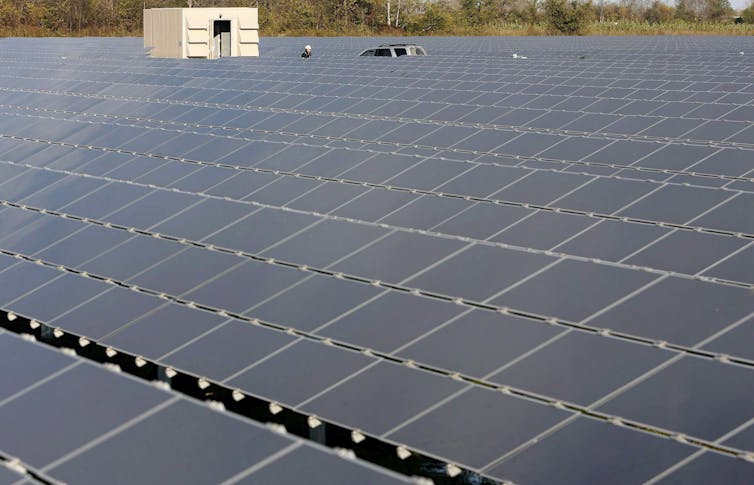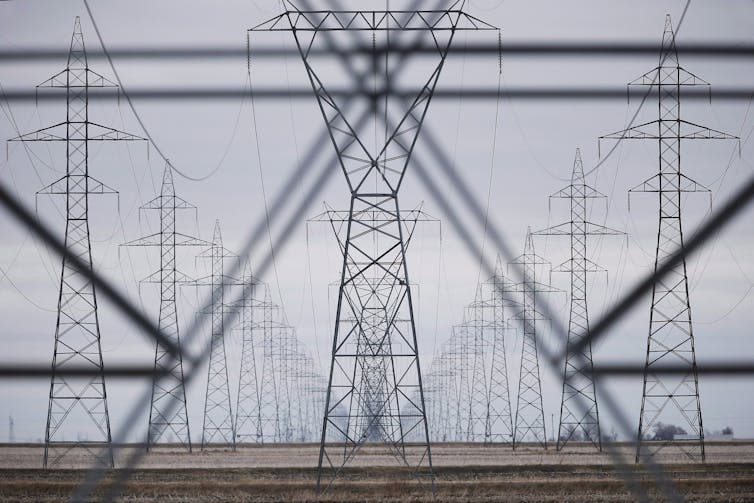
This article was published by The Conversation on Sept. 12, 2023
PhD Candidate, Chemical Engineering, McMaster University
Assistant Professor, Department of Chemical Engineering, McMaster University
Hotter summers, drier forests, rising waters: climate change is not just a threat to our future, it’s hurting our world right now.
While there are many ways human activity has brought about climate change, global electricity generation sources are among the leading culprits. Despite small upticks in the supply of wind and solar power, we have not yet reached a point where we are able to dislodge the fossil fuels that are entrenched in the power mix of many countries.
But why is this still the case?
Since renewable sources deliver an intermittent supply of power, we also need a way to store this energy to meet the demand of the grid when the sun is not shining, or the wind is not blowing. This is a major challenge, as the switch to renewable power also requires establishing long lasting, safe and affordable energy storage systems. As such, finding a cheap, safe and alternative battery to lithium is the key to moving the needle to a completely renewable power sector.
Beyond lithium-ion batteries
As with electric vehicles, lithium-ion batteries have become a popular option for the grid, as they offer a high energy density, modular solution for energy storage. But the use of lithium-ion batteries has also brought along its own challenges with high cost of materials, risk of fire and explosion and lack of recycling practices limiting the widespread adoption of lithium-ion batteries for the grid.

One incredibly promising option to replace lithium for grid scale energy storage is the rechargeable zinc-ion battery. Emerging only within the last 10 years, zinc-ion batteries offer many advantages over lithium. These include cheaper material costs, increased safety and easier recycling options.
With grid-scale energy storage potential at a considerably cheaper cost — and higher levels of safety — widespread commercialization of zinc-ion batteries could be exactly what is needed to integrate renewables into energy infrastructure in Canada and other countries.
The cost of a battery
For Canada to reach the decarbonization targets set in the Canadian Net-Zero Emissions Accountability Act, including a grid powered by 90 per cent renewable electricity, the deployment of zinc-ion batteries will be crucial.
Studies have shown that for renewables to become the source of 90 to 95 per cent of all electricity, the cost of energy storage must be below US$150/kWh. Modern lithium-ion systems are still sitting around US$350/kWh. In part, this is due to high manufacturing costs and their reliance on expensive raw materials to achieve the high energy density needed for modern electric vehicles.

Zinc-ion batteries on the other hand, could solve the cost and abundance issues. Using inexpensive, abundant materials such as zinc and manganese not only makes them cheaper to produce, but lowers risk from supply chain disruptions or material shortages that affect lithium-ion materials such as lithium and cobalt.
The annual production of zinc globally is over 100 times that of lithium. Not to mention that demand for lithium and cobalt is anticipated to outweigh the supply within the next decade.
Zinc is a safer option
With rigorous safety standards being created for batteries used in homes, factories or within the electrical grid, safety is key to getting the public to embrace them. In this way, zinc-ion batteries offer further advantage.
The flammable and toxic solvent based electrolyte of lithium-ion batteries is replaced with a water-based alternative, removing the risk of fire and explosion.
Conversely, the safe disposal of lithium-ion batteries can also be a difficult task, as they contain toxic compounds. Recycling these batteries is currently economically infeasible due to high costs leading to large numbers of spent cells ending up in landfills.
Fortunately, zinc-ion batteries simplify end of life treatment. The nontoxic, aqueous electrolyte used in zinc-ion batteries means that well established methods like those for lead-acid battery disposal can be used. Also, the metallic zinc anode could be easily reused in new batteries.
The future of energy storage
To reach its goal of 90 per cent renewable energy by 2030, Canada must look for alternatives to lithium-ion batteries to enable decarbonization of its power sector. Leveraging the cost, abundance and safety benefits of zinc-ion batteries, Canada can accelerate the integration of wind and solar power across the nation.
Zinc-ion batteries support Canada’s decarbonization goals and prove an opportunity to capitalize on a rapidly expanding battery market. While zinc-ion batteries are a relatively new technology, their potential to support grid scale energy storage within Canada and worldwide cannot be understated.
With the help of Canadian research and manufacturing, including efforts from McMaster University and Dartmouth, N.S.-based Salient Energy Inc., the integration of zinc-ion batteries could become a reality within the next several years, establishing Canada as an industry leader.


Be the first to comment